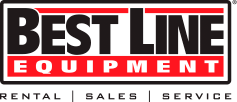Safety Tips for Heavy Equipment Operators
Heavy equipment manufacturers have made many strides and technology advancements throughout their existence to increase operator safety. Although this is great news, there are still some precautions every operator of heavy equipment should follow. Whether the operator is using an excavator, wheeler loader, compaction roller or telehandler, there are practices that should be executed to ensure they are as safe as possible. By keeping some of these heavy equipment safety tips in mind, you will reduce the number of accidents and injuries.
Safety Train
You should never get into a machine you are unfamiliar with or have not been trained to use. Before climbing into a piece of heavy equipment, make sure you have the necessary training or certifications needed to continue on the job. In addition, make sure you know what all controls are for and what the machine is specifically made to do. By not knowing how to operate, you put yourself and others in danger on the jobsite. If you are unsure of how to operate properly while renting, be sure to discuss with the professionals that you are renting from and refer to the manufacturer’s operation and maintenance manual.
Pick the Right Equipment for the Job
There are hundreds of different types, models, and sizes of equipment that are made specifically for certain jobs. If you are not familiar with heavy equipment, it can be difficult to decide which is the right one for the job you are accomplishing. If you are lifting heavy objects, make sure the machine you are using can handle the load or if you are using a lift, make sure it has the right tires for the type of terrain you are working on. These are questions you must ask yourself before performing the task.
Machine and Jobsite Walk Around
Before climbing into the machine to start your work, always conduct a visual walk around check of the machine. You should be looking for any abnormalities or damage such as loose bolts, worn tires or track tread, any leaks, etc. After conducting a walk around, make sure you inspect the jobsite. Inspect and point out any potential hazards or obstacles on the job site and know where they are at all times. These can include, but are not limited to power lines, underground pipes, gas lines, overhead obstacles. Beyond these obstacles, look for any environmental obstacles as well. If it is winter, check the ground for ice and snow. Have your equipment prepared to operate in harsher weather conditions. If necessary postpone work due to the working conditions.
Entering and Exiting Heavy Equipment
When climbing in and out of a machine, make sure you are entering using three points of contact. What this means is making sure you have three points of contact with the machine at all times; using two hands and one foot or two feet and one hand. Believe it or not, carelessness when mounting and dismounting equipment is a big contributor to operators that have been hurt on the job.
Lock Out Tag Out
If you are unfamiliar with this safety procedure, we highly recommend you start using it. Lock out – tag out is when you lock out the machine so it can’t be started and put a tag on it stating its condition. This means that it’s secured in its “safe” position and cannot be turned on. By using this safety procedure it not only prevents injuries to yourself while working on the machine, but keeps others safe who may not know what is going on with the machine. The tag will be an indication to everyone trying to start the machine that it is unsafe. According to OSHA, lock out/tag out standards prevent an estimated 50,000 injuries and 120 deaths annually.
WEAR SEAT BELTS
There are no excuses for not wearing your seat belt. It is just as important to wear your seat belt in a heavy equipment machine as it is in your car. By wearing your seat belt, not only does it reduce the risk of severely being injured in the case of a rollover, but it also keeps you firmly in your seat when operating on rough terrain.
These are just a few of many safety precautions you should take when operating heavy equipment. When you keep these in the back of your head on the jobsite, you not only reduce the risk of injuring yourself and others but you also set a good example for others on the jobsite.
To schedule safety training, request pricing, or discuss future training needs, please visit our website at: http://www.bestline.com/certification-and-training-in-pennsylvania--training or email Best Line's Safety Department: safetydep@bestline.com.
